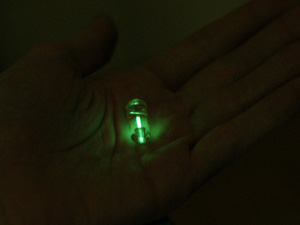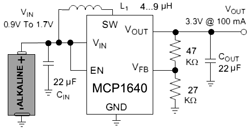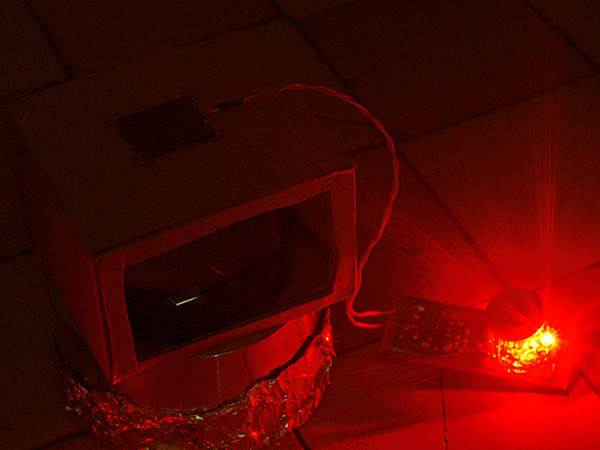Nuclear Reactor - Homes From Scratch
 Some time ago I published an article on home-made microprocessors , today we will touch upon a more complex and sensitive topic (especially in the light of the events at Fokusima) - the creation of a nuclear reactor capable of generating energy at home. And before you begin to worry, recalling the negative experiments in the past (see Radioactive Boy Scout - decently decaying americium-241 from smoke detectors) I will say in advance that everything described in this article is relatively safe (at least not more dangerous than working with hydrofluoric acid at home), but is not recommended for repetition. Before any action, consult your lawyer - the laws are different in different countries. Many who are already sitting.
Some time ago I published an article on home-made microprocessors , today we will touch upon a more complex and sensitive topic (especially in the light of the events at Fokusima) - the creation of a nuclear reactor capable of generating energy at home. And before you begin to worry, recalling the negative experiments in the past (see Radioactive Boy Scout - decently decaying americium-241 from smoke detectors) I will say in advance that everything described in this article is relatively safe (at least not more dangerous than working with hydrofluoric acid at home), but is not recommended for repetition. Before any action, consult your lawyer - the laws are different in different countries. Many who are already sitting.
What are our ways of creating a home nuclear reactor?
Thermonuclear reaction
Heavy hydrogen (deuterium) is relatively easy to obtain at home - all that is needed is a multi-stage electrolysis of ordinary water. But scientists still have problems with the reactor even for the first ten years (and this is not taking into account that deuterium is far from the easiest thermonuclear fuel to use)
Nuclear fission reaction
In the simplest case, you just need natural uranium without enrichment and some water (hehe, “Just add water”: water is both a moderator and a neutron reflector). The problem is that you need hundreds of tons of this stuff, and the doctor will definitely come for you, even if you try to find / buy / take away 0.1 grams.
Here, in despondency, it remains for us to turn our eyes to the sky and look at what the interplanetary ships fly on - there is just a piece of radioactive material that heats up due to natural decay and receives energy from the Peltier elements. (By the way, natural decay - actually the main physical reason for all troubles at Fokusima - after the nuclear reactor is stopped in the first minutes, 7% of the rated power is allocated due to decay, in the first weeks - ~ 1%, then drops to 0.1%. That is, from 700MW the reactor in the first weeks it is necessary to remove 7MW of heat, and this process cannot be stopped)
Let's try to think in this direction: There are 3 main types of radioactive decay:
Gamma decay
 Gamma radiation sources are widely used in medicine and industry, mainly based on Cobalt-60 / Cesium-137 (notorious for nuclear disasters). The problem is that their radiation is very hard, extremely dangerous, and you can’t protect yourself from it and a lead centimeter (see the cheerful Vavilov-Cherenkov glow on the right - electrons knocked out by gamma rays moving in water at superluminal speed emit energy in the visible range). So go around them as far as possible. Well, and besides, a lot of people sit down for illegal marketing / purchase of gamma sources every year
Gamma radiation sources are widely used in medicine and industry, mainly based on Cobalt-60 / Cesium-137 (notorious for nuclear disasters). The problem is that their radiation is very hard, extremely dangerous, and you can’t protect yourself from it and a lead centimeter (see the cheerful Vavilov-Cherenkov glow on the right - electrons knocked out by gamma rays moving in water at superluminal speed emit energy in the visible range). So go around them as far as possible. Well, and besides, a lot of people sit down for illegal marketing / purchase of gamma sources every year 
. In fairness, it is worth noting that in these cases the gamma-ray is not allocated directly, but as a result of the decay of one of the daughter short-lived elements.
Alpha decay
Sources of alpha radiation are actively used in smoke detectors, to facilitate the ignition of sparks, in some radio tubes. One of the most famous is the one mentioned at the beginning of America-241. Even a sheet of paper can easily protect itself from alpha radiation, but there is another danger with them: they are extremely dangerous if inhaled / swallowed. See the myth of poisoning by Bloody Gabe Litvinenko. In addition, picking up quantities of more micrograms is unrealistic, so thermoelectric generators will have to be forgotten. But it’s a pity - after all, the most efficient energy generators work on the basis of alpha decay. The best - Plutonium-238 (Not to be confused with 239) - gives off 0.5 Watts of heat per 1 gram of mass, half-life is 87 years (price - 1 megabax per kilo).
Beta decay
Sources of soft beta radiation (in fact, electrons / positrons) are moderately well shielded, and have a damn useful quality: when an electron enters the phosphor, it can cause its glow. Well, as a side effect - in most countries of the world “safe” beta emitters are quite legal. Which is what manufacturers of all kinds of luminous trinkets use, as in the first photo. Perhaps, on the basis of beta decay, we will build our own nuclear reactor.
The basis of our reactor is a capsule with tritium, from the notorious DealExtreme website - www.dealextreme.com/p/mini-tritium-glowring-keychain-10-year-green-glow-6830 . $ 9.7 Formally, radioactive materials cannot be so easily sent by mail, but DealExtreme apparently does not know about this.
About security
Soft beta radiation cannot go beyond the capsule; helium is not radioactive. The problem can only be in case of damage to the capsule. If you inhale tritium, then the infection will be minimal, because hydrogen is not directly absorbed by the body. But if it burns out, then water can become part of the cells, and then you get all the radiation that can only squeeze out this microscopic piece of tritium. So, do not break, do not burn and do not inhale what happened.
 So, Tritium is superheavy hydrogen, the half-life of 12.32 years. At the exit, we have helium and very “soft” electrons - 6.5 keV (+ antineutrino, for connoisseurs). We will collect energy by a solar battery, feed the MCP1640 stabilizer to the Step-Up input - it works up to tenths of a volt at the input, the output is an ionistor at 1 Farad and 5V. In our case, the load will be a red LED.
So, Tritium is superheavy hydrogen, the half-life of 12.32 years. At the exit, we have helium and very “soft” electrons - 6.5 keV (+ antineutrino, for connoisseurs). We will collect energy by a solar battery, feed the MCP1640 stabilizer to the Step-Up input - it works up to tenths of a volt at the input, the output is an ionistor at 1 Farad and 5V. In our case, the load will be a red LED. In order to collect as much light as possible, we place our capsule with tritium in a foil reflector.
In order to collect as much light as possible, we place our capsule with tritium in a foil reflector. For focusing, we use 2 lenses of 10 diopters each , the solar battery is visible before gluing, the capsule is not installed.
For focusing, we use 2 lenses of 10 diopters each , the solar battery is visible before gluing, the capsule is not installed.We connect, turn off the light, wait a minute for the initial charge of the ionistor, and here is the result:

The first electricity produced by a nuclear reactor created at home :-)
Freebie?
Oh no :-) On average, a reactor produces about 7 milliwatts of power (and after 12.32 it will be 3.5
 ), and even if that’s enough for an LED, the laptop cannot be charged from it) But on the other hand, a dozen of these modules will be able to keep the cell phone in mode Expectations for a couple of decades :-) True price ... A capsule costs $ 9.7, a solar battery $ 5, lenses $ 13.8 * 2 - already $ 42 per module. And for a dozen, you have to give 420 $ ... On the other hand, there are more capsules on the site - but for 35.
), and even if that’s enough for an LED, the laptop cannot be charged from it) But on the other hand, a dozen of these modules will be able to keep the cell phone in mode Expectations for a couple of decades :-) True price ... A capsule costs $ 9.7, a solar battery $ 5, lenses $ 13.8 * 2 - already $ 42 per module. And for a dozen, you have to give 420 $ ... On the other hand, there are more capsules on the site - but for 35. Comments / questions / opinions - in the studio.
UPDATE: Comrades, we are raising the English translation to Reddit
http://www.reddit.com/r/technology/comments/ggg43/guys_ive_just_built_tiny_nuclear_reactor_at_home/
